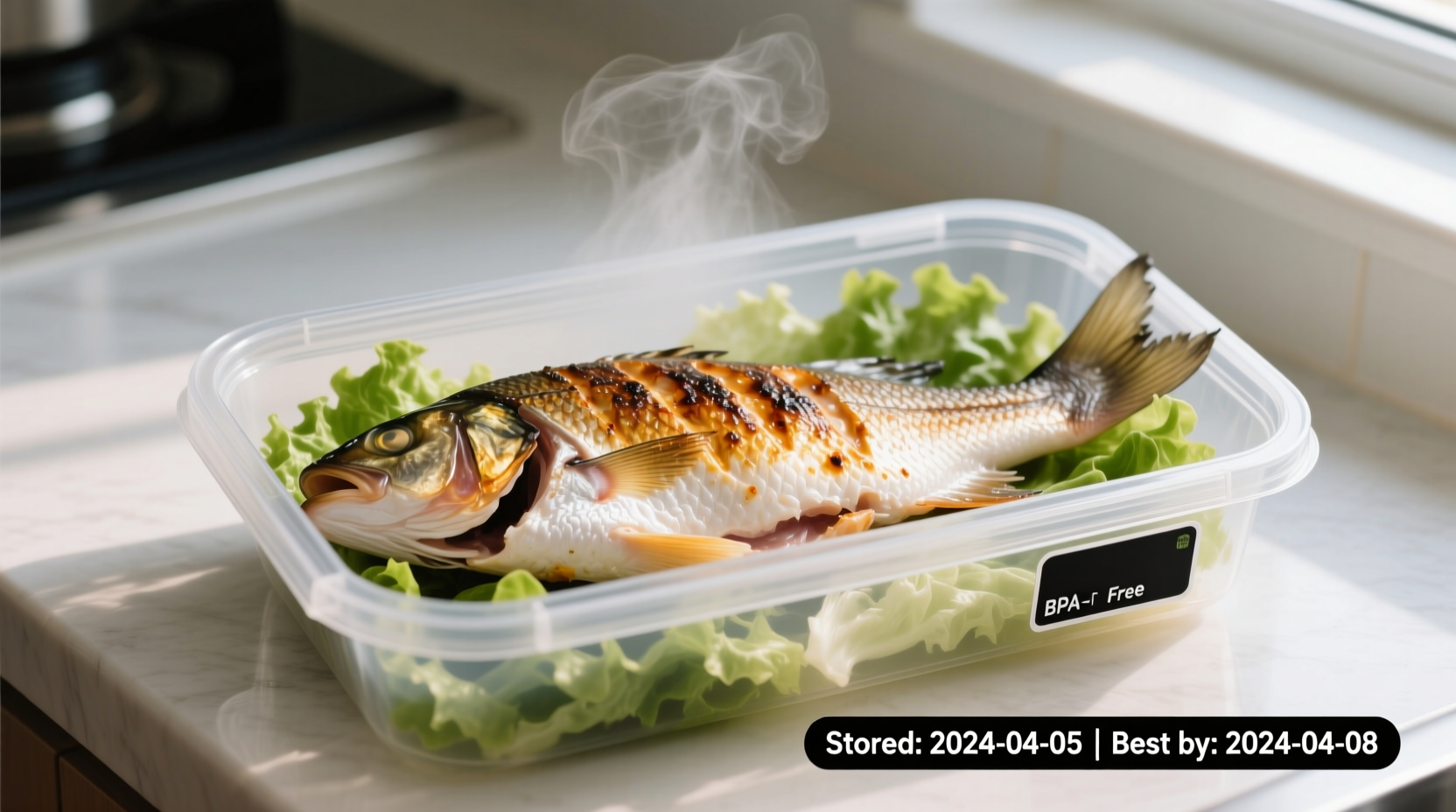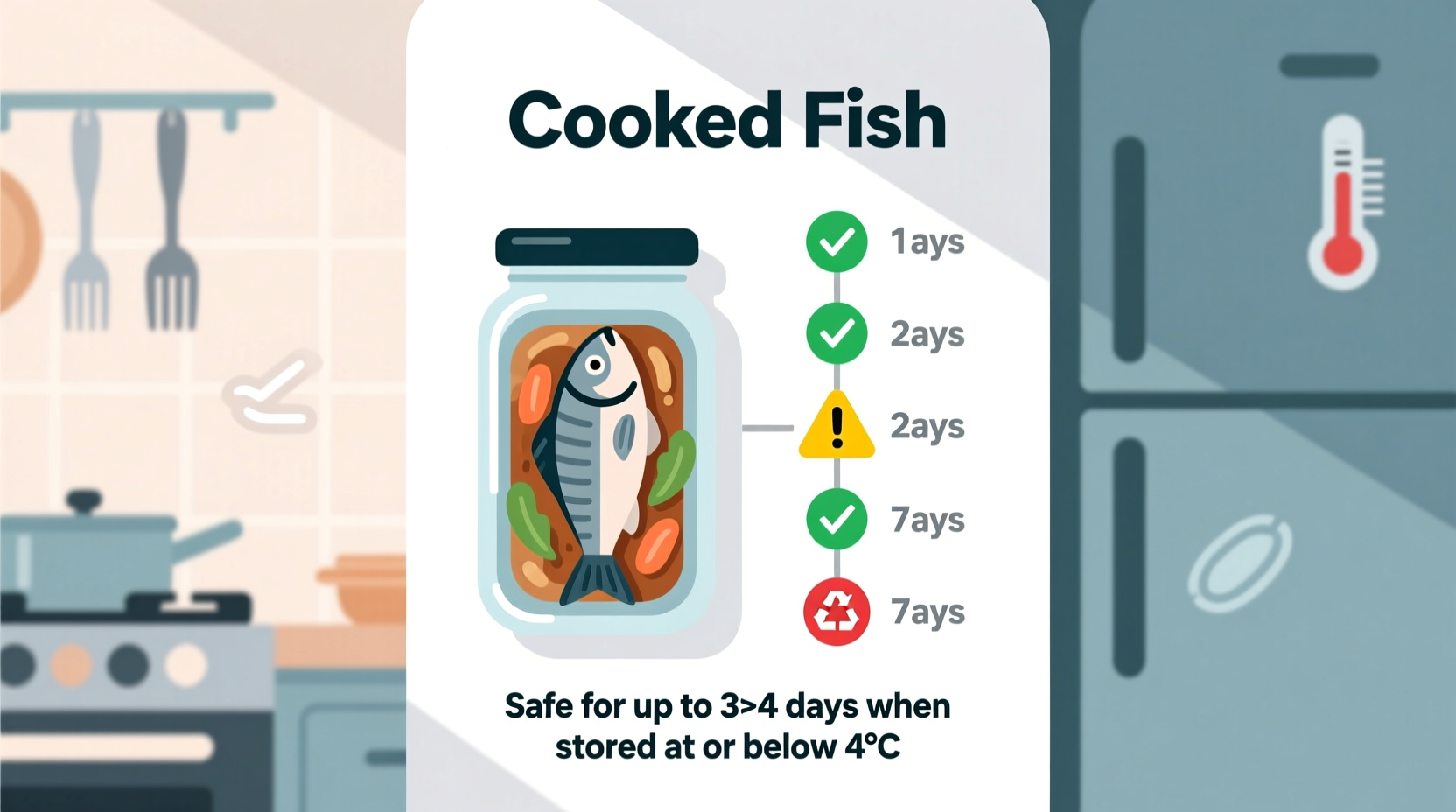Wondering if that leftover grilled salmon from dinner is still safe for lunch tomorrow? You're not alone. Food safety questions about seafood storage top Google searches weekly, and for good reason—consuming spoiled fish can lead to serious foodborne illness. Let's cut through the confusion with science-backed guidelines you can trust.
The Science Behind Fish Spoilage
Fish spoils faster than other proteins due to its delicate structure and high moisture content. Unlike land animals, fish muscle breaks down more rapidly after death because they evolved in cold environments with less need for preservation mechanisms. When cooked fish enters the temperature danger zone (40°F to 140°F), bacteria multiply exponentially—doubling every 20 minutes under ideal conditions.
The USDA Food Safety and Inspection Service confirms that cooked seafood should never remain in the refrigerator beyond 4 days. This guideline appears in the FSIS Cold Food Storage Charts, which food safety professionals reference daily.
Factors That Affect Your Cooked Fish's Shelf Life
While the standard 3-4 day rule applies to most situations, these variables can shorten or extend that window:
- Refrigerator temperature: Your appliance must maintain 40°F (4°C) or below—use an independent thermometer to verify
- Initial freshness: Fish that was near spoilage before cooking won't last the full timeframe
- Cooking method: Deep-fried fish lasts slightly longer than poached due to reduced moisture
- Storage container: Airtight containers outperform loosely covered dishes by 24-48 hours
| Fish Type | Maximum Refrigeration Time | Special Considerations |
|---|---|---|
| Fatty fish (salmon, mackerel) | 3 days | Fats oxidize faster; smell test is critical |
| Lean fish (cod, tilapia) | 4 days | More stable but watch for texture changes |
| Shellfish (shrimp, crab) | 3 days | Higher spoilage risk; consume sooner if possible |
Proper Storage Techniques That Extend Freshness
Follow these professional kitchen practices to maximize your cooked fish's shelf life:
- Cool rapidly: Divide large portions into shallow containers (no deeper than 2 inches) to cool within 2 hours
- Airtight is essential: Use glass containers with locking lids or vacuum-sealed bags—never leave fish uncovered
- Temperature verification: Store in the coldest part of your refrigerator (usually the back, bottom shelf)
- Label everything: Note cooking date and time with masking tape on containers
The FDA Food Code emphasizes that proper cooling and storage prevents the growth of Listeria monocytogenes, which can multiply even in refrigerated conditions. This pathogen causes listeriosis—particularly dangerous for pregnant women and immunocompromised individuals.

Spoilage Warning Signs You Must Recognize
Before consuming refrigerated cooked fish, perform this 3-point inspection:
Visual Check
Fresh cooked fish maintains its original color. Watch for:
- Gray or brown discoloration on edges
- Cloudy or milky liquid surrounding the fish
- Dry, flaky appearance (beyond normal cooking texture)
Smell Test
Fresh cooked fish has a mild ocean scent. Discard immediately if you detect:
- Strong ammonia odor
- Sour or rancid smell
- Vinegar-like acidity
Texture Assessment
Gently press with clean utensil:
- Fresh fish springs back slightly
- Spoiled fish feels slimy or mushy
- Excess moisture indicates bacterial growth
Never taste fish to determine freshness—even a small amount of spoiled seafood can cause illness. The CDC reports that improper leftover handling contributes to 20% of foodborne illness cases in home kitchens.
When in Doubt, Throw It Out
Food safety experts universally agree: if you're uncertain about cooked fish's safety, discard it. The minor cost of replacement pales against potential medical bills from food poisoning. Consider these scenarios where you should always discard refrigerated cooked fish:
- It's been in the fridge longer than 4 days
- Your refrigerator temperature exceeded 40°F for more than 2 hours
- You notice any signs of spoilage mentioned above
- The fish was left at room temperature for over 2 hours (1 hour in hot conditions)
Extending Shelf Life Through Freezing
If you won't consume cooked fish within 3-4 days, freezing preserves quality for longer storage:
- Wrap tightly in moisture-proof material (freezer paper or heavy-duty aluminum foil)
- Place in airtight freezer bags, removing all air
- Label with contents and date
- Consume within 2-3 months for best quality
When thawing frozen cooked fish, always use refrigerator thawing—never at room temperature. The University of Minnesota Extension confirms that slow refrigerator thawing maintains texture and prevents bacterial growth during the process.
Safe Reheating Practices
When consuming refrigerated cooked fish, proper reheating kills potential bacteria:
- Heat to internal temperature of 165°F (74°C)
- Use oven or stovetop instead of microwave for more even heating
- Add moisture (broth or lemon juice) to prevent drying
- Consume immediately after reheating—don't re-refrigerate
Remember that reheating doesn't make spoiled fish safe to eat. If your fish shows any spoilage signs before reheating, discard it immediately.
Special Considerations for Vulnerable Groups
Certain populations face higher risks from foodborne illness. The FDA recommends that pregnant women, older adults, and immunocompromised individuals consume cooked fish within 2-3 days rather than the standard 3-4 days. These groups should also avoid raw or undercooked seafood entirely.
Practical Leftover Management Tips
Implement these professional kitchen habits at home:
- First In, First Out: Place new leftovers behind older ones in the refrigerator
- Portion Control: Divide large batches into single-serving containers
- Clear Labeling: Use masking tape with cooking date and time
- Regular Audits: Check your refrigerator every 48 hours for aging leftovers
These practices reduce food waste while maintaining safety standards. The National Resources Defense Council found that proper food storage could prevent 15 million tons of food waste annually in American households.
Common Questions About Cooked Fish Storage
Below we've addressed the most frequently asked questions about cooked fish storage with evidence-based answers.











 浙公网安备
33010002000092号
浙公网安备
33010002000092号 浙B2-20120091-4
浙B2-20120091-4